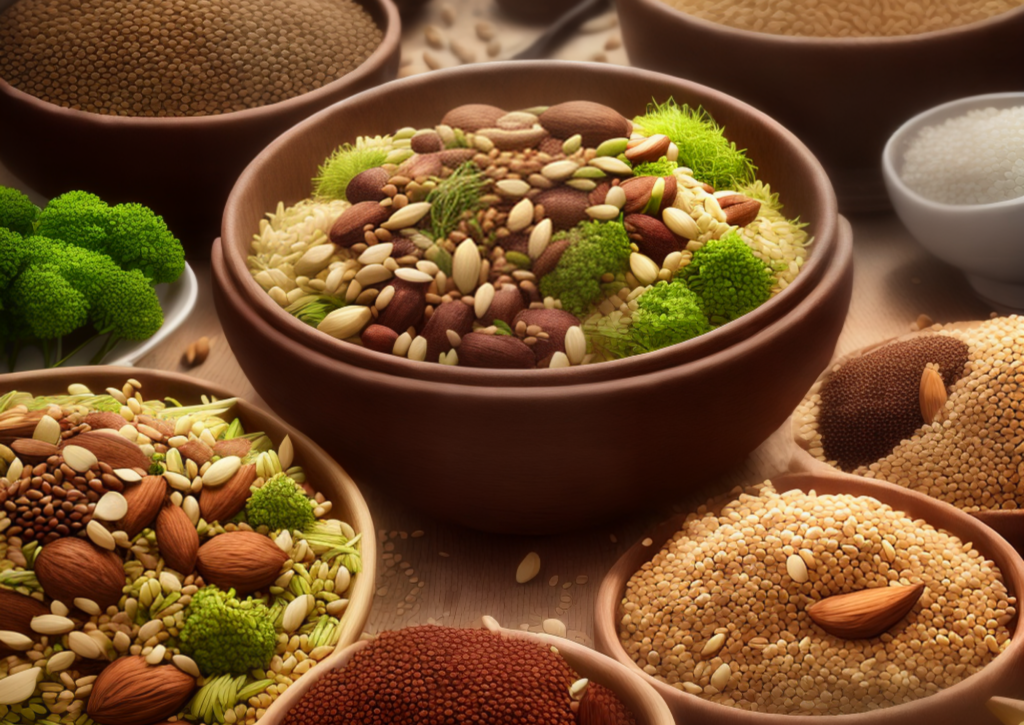Breastfeeding, a natural yet sometimes challenging journey, holds immense significance. The quest to discover ways to increase breast milk supply is a common concern, further influenced by societal myths, age-old practices, and local remedies. This article delves into the multifaceted aspects of ways to increase breast milk supply tailored to Indian mothers.
Understanding the Basics
Breast milk is a baby’s primary nutrition source, packed with essential nutrients and antibodies. However, various factors can affect its production. Before we discuss the ways to increase breast milk supply, understanding these factors is crucial.
Factors Affecting Milk Supply
Hormonal Changes:
Post-childbirth, a woman’s body undergoes significant hormonal changes, which can sometimes impact the ways to increase breast milk supply.
Baby’s Latching Technique:
Proper latching is crucial. An incorrect latch can lead to inadequate milk extraction, signaling the body to produce less milk.
Maternal Health:
A mother’s overall health, including her diet and stress levels, plays a significant role in the ways to increase breast milk supply.
Ways to Increase Breast Milk Supply
Frequent Feedings
One of the primary ways to increase breast milk supply is through the demand and supply mechanism of breastfeeding. The more the baby feeds, the more milk the body produces. Ensuring the baby latches correctly and feeds often can naturally enhance milk production.
Proper Latching Technique
A proper latch ensures effective milk extraction, which is one of the ways to increase breast milk supply:
Positioning: Hold the baby in a way that their mouth and your nipple are on the same level. Use pillows for support if needed.
Mouth Wide Open: Encourage your baby to open their mouth wide. They should turn their bottom lip outwards, and as a result, you should see more areola above their top lip than below the bottom one.
Comfort: If breastfeeding is painful beyond the initial latch-on, it might indicate an improper latch. In such cases, gently break the suction and try again.
Stay Hydrated
Water is essential for the ways to increase breast milk supply. Drinking at least 8-10 glasses a day can significantly impact milk supply.

Lactation-Boosting Foods in the Indian Market
Indian cuisine offers a plethora of foods that can be ways to increase breast milk supply:
Seeds and Nuts Beneficial for Lactation
- Carom Seeds (Ajwain): Ajwain paratha or a simple ajwain water concoction can be beneficial.
- Sesame Seeds (Til): Til laddoos, made with jaggery, are a postpartum favorite.
- Almonds (Badam): Soaked overnight and consumed in the morning, they’re a nutritious addition.
- Fenugreek (Methi): Many believe both the seeds and the leaves can increase breast milk supply.
- Fennel Seeds (Saunf): These aromatic seeds can be brewed into a tea or incorporated into dishes.
- Poppy Seeds (Khuskhus): Often used in Indian desserts or as a thickening agent in curries.
- Cumin Seeds (Jeera): ‘Jeera water’ is a popular drink among nursing mothers.
- Nigella Seeds (Kalonji): These seeds can be sprinkled on flatbreads or mixed into vegetable dishes.
- Fox Nuts (Makhana): Many enjoy makhana as a snack, roasting them with ghee and seasoning.
- Black Sesame Seeds: Consumed in the form of chikkis or laddoos, especially favored during winter.
Vegetables and Grains for Boosting Milk Supply
- Barley (Jau): Barley water, simmered with cardamom, is popular among nursing mothers.
- Pulses: Lentils, especially masoor dal and moong dal, can be cooked with cumin and garlic.
- Bitter Gourd (Karela): Karela sabzi can be beneficial.
- Gourd Vegetables: Bottle gourd (lauki) and ridge gourd (tori) can be cooked as ‘sabzis’.
- Drumstick (Moringa): The leaves and pods can be added to make ‘Sambar’.
- Oats: A bowl of oatmeal for breakfast can be beneficial.
- Leafy Greens: Spinach, Methi, and other greens are rich in essential nutrients.
Other Beneficial Ingredients
- Garlic: A staple in Indian cooking, its aroma is believed to stimulate breast milk supply.
- Dates (Khajoor): Rich in essential nutrients, they can be consumed raw or added to dishes.
- Turmeric (Haldi): Known for its anti-inflammatory properties, it can be added to make ‘Golden Milk’.
- Sago (Sabudana): ‘Sabudana Khichdi’ or ‘Sabudana Kheer’ are popular dishes made from sago.
Pump Between Feedings
Using a breast pump between feedings can stimulate the breasts to produce more milk, which is one of the ways to increase breast milk supply.
The Power of Relaxation
Stress can hinder the ways to increase breast milk supply. Techniques like deep breathing, meditation, or even listening to calming music can help.
Common Myths in Indian Society
Dietary Myths
“Ghee increases milk supply.”
While ghee is nutritious, there’s no scientific evidence linking it directly to ways to increase breast milk supply.
“Consuming cold foods decreases milk supply.”
While maintaining a balanced diet is advisable, cold foods don’t directly influence the methods to increase breast milk supply.
Physical Indicators and Misconceptions
“If your breasts feel soft, you’re not producing enough milk.”
Soft breasts are a sign of the milk supply adjusting to the baby’s needs, not necessarily a low supply.
“Small breasts produce less milk.”
Breast size is not an indicator of ways to increase breast milk supply.
Feeding Practices and Myths
“Feeding the baby with a bottle will give the mother a break and increase milk supply.”
Introducing a bottle can reduce the baby’s demand for breast milk, potentially decreasing the ways to increase breast milk supply.
“Colostrum (the first milk) is not nutritious.”
Contrary to this myth, colostrum packs in antibodies and plays a vital role in a newborn’s health.
“Feeding during an eclipse harms the baby.”
This age-old myth lacks scientific backing. Eclipses do not affect ways to increase breast milk supply.
“Breast milk loses its nutritional value as the baby grows.”
Breast milk continually adapts to a baby’s needs, providing necessary nutrients at all stages.
“Introducing solids early will help the baby sleep better.”
Introducing solids early can indeed reduce a baby’s breast milk intake. Therefore, experts generally advise not to do so until the baby reaches six months of age.
Discovering ways to increase breast milk supply is a journey, one that requires patience, understanding, and sometimes even a bit of trial and error. While each mother’s experience is distinct, gaining an understanding of the factors affecting milk supply is essential. Additionally, debunking myths and embracing both traditional and contemporary methods can pave the way for a fulfilling breastfeeding journey. Finally, with the right support and resources, the challenges and joys of motherhood can be navigated with grace and confidence.
FAQs
Navigating the journey of breastfeeding often brings with it a myriad of questions, especially when it comes to ways to increase breast milk supply. As every mother’s experience is unique, it’s natural to seek clarity on various aspects of lactation. In this section, we address some of the most commonly asked questions about ways to increase breast milk supply, offering insights rooted in both traditional wisdom and modern understanding.
Diet and Consumption
Q: Does the intake of dairy products impact breast milk production?
A: Dairy intake doesn’t necessarily impact milk production, but some babies might be sensitive to cow’s milk proteins passed through breast milk.
Q: Can spicy foods decrease milk supply?
A: While spicy foods don’t directly decrease milk supply, they might change the taste of the milk. Some babies might be sensitive to this change, affecting their feeding patterns.
Q: Does alcohol consumption affect milk supply?
A: While moderate alcohol consumption doesn’t seem to directly impact milk supply, it can indeed alter the milk’s taste. Therefore, you should time your alcohol consumption to ensure that the baby isn’t exposed to it during feeding. Additionally, for the baby’s best interest and overall well-being, avoiding alcohol altogether while breastfeeding is advisable.
Q: How does caffeine intake impact milk production?
A: While moderate caffeine intake, equivalent to about 2-3 cups of coffee a day, typically doesn’t affect milk supply, higher amounts might impact some mothers. Therefore, it’s always wise to monitor the baby’s behaviour and adjust intake accordingly.
Physical Factors and Health
Q: How does maternal age affect milk supply?
A: While women of all ages can produce adequate milk, some studies suggest that younger mothers might experience a more rapid initial onset of milk, while older mothers might have a more substantial milk supply several days postpartum. However, individual experiences can vary widely.
Q: Do twins or multiple births impact the quantity of milk produced?
A: Yes, mothers of twins or multiples often produce more milk due to increased demand. The body typically adjusts to the needs of multiple babies.
Q: Does the type of delivery (C-section vs. vaginal) affect milk supply?
A: Some mothers who have C-sections might experience a slight delay in milk coming in, but with consistent feeding or pumping, they can establish a robust milk supply just like mothers who had vaginal deliveries.
Q: Can certain illnesses or medications decrease milk supply?
A: Yes, some illnesses, especially those accompanied by dehydration or hormonal imbalances, can impact milk supply. Similarly, specific medications can reduce milk production. Always consult with a healthcare provider about any health concerns or medications.
Lifestyle and Practices
Q: How does the introduction of solid foods influence milk production?
A: Introducing solids can lead to a decrease in milk demand as the baby starts consuming other foods. However, breast milk remains a primary source of nutrition until the baby’s first year, and regular nursing or pumping can help maintain supply.
Q: How does the spacing between breastfeeding sessions affect milk supply?
A: More frequent breastfeeding sessions can stimulate increased milk production. Extended gaps between sessions might signal the body to produce less milk.
Q: Can breast surgeries or implants impact milk production?
A: The type of surgery and the location of incisions can determine how breast surgeries or implants might impact milk production or milk ducts. You should consult a lactation consultant or healthcare provider about any related concerns.
Q: How does returning to work impact milk supply?
A: Returning to work can be a challenging transition. Regular pumping sessions during work hours can help maintain milk supply.
Q: Does the spacing between pregnancies affect milk supply?
A: Short intervals between pregnancies might not give the body enough time to recover fully, potentially impacting milk supply in some women.
Q: How does postpartum depression influence milk production?
A: Stress and depression can potentially impact milk supply. It’s essential to seek support and treatment if one suspects postpartum depression.
Natural Remedies and Supplements
Q: Do lactation cookies really work?
A: Lactation cookies often feature ingredients such as oats, flaxseed, and brewer’s yeast, which many believe boost milk supply. Although many mothers vouch for their effectiveness, limited scientific evidence supports these claims. However, they can be a nutritious snack.
Q: Can certain essential oils boost milk supply?
A: While some believe that massaging diluted fennel essential oil onto the skin can boost milk supply, it’s crucial to exercise caution. Therefore, always consult with a healthcare professional before using any essential oils.





